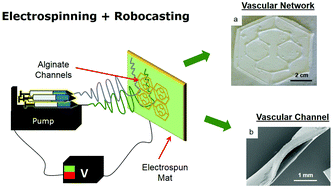Fabrication of biodegradable synthetic perfusable vascular networks via a combination of electrospinning and robocasting
Abstract
Biodegradable synthetic vascular networks are produced via the combination of robocasting and electrospinning techniques. Preliminary revascularization studies using microvascular endothelial cells and human dermal fibroblasts show good attachment and uniform distribution within the vascular networks, highlighting their potential use in vascular tissue engineering applications.


 Please wait while we load your content...
Please wait while we load your content...